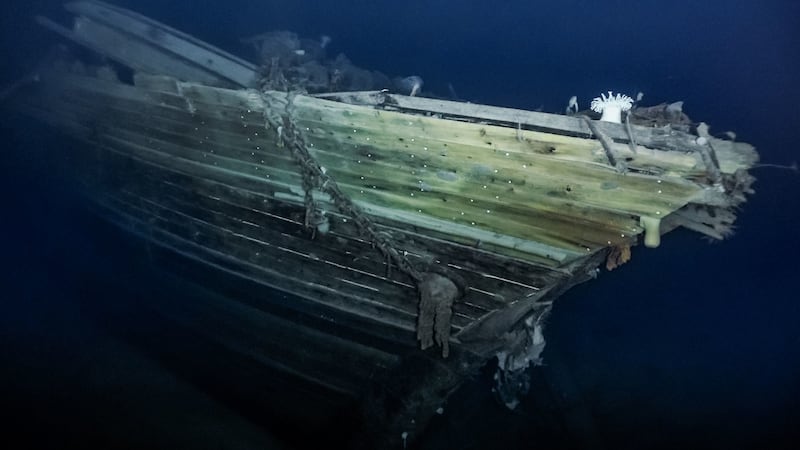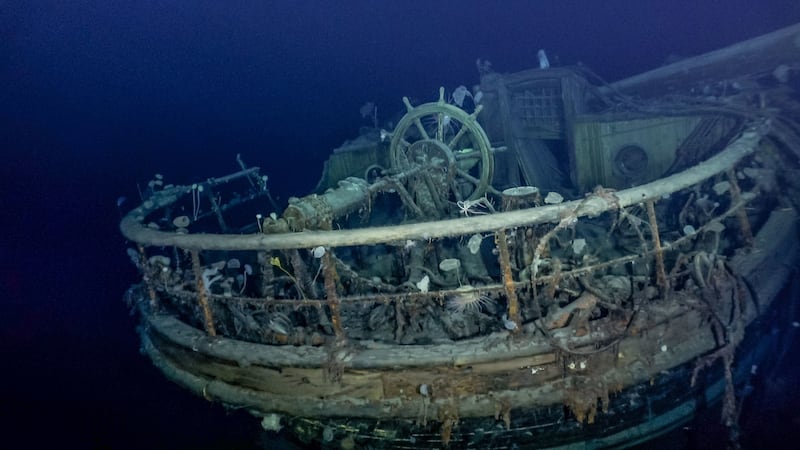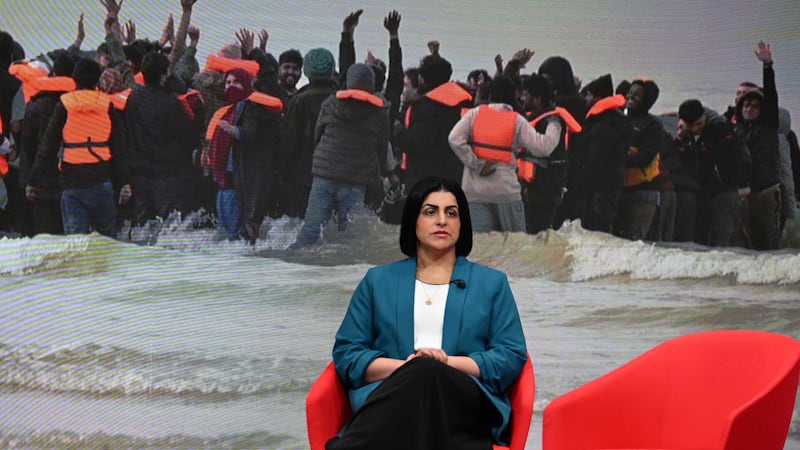Ronan McGreevy and Anne Lucey
The discovery of the Endurance 107 years after it sank in the Weddell Sea will further burnish Irish man Ernest Shackleton’s reputation as one of the world’s greatest explorers.
The wooden ship had not been seen since it was crushed by sea ice and sank in November 1915.


The wreck is coherent, in an astonishing state of preservation. The Antarctic seabed does not have any wood eating micro organisms, the water has the clarity of distilled water. We were able to film the wreck in super high definition. The results are magical
— Dan Snow (@thehistoryguy) March 9, 2022
#Endurance22 pic.twitter.com/ppnJaMcmBa
Last month the Endurance22 Expedition set off from Cape Town, South Africa, a month after the 100th anniversary of Shackleton's death on a mission to locate it.
The Falklands Maritime Heritage Trust said Endurance was found at a depth of 3,008m (9,867ft) and approximately 6km south of the position originally recorded by ship's captain Frank Worsley.
Shackleton was born in Kilkea, outside Athy in Co Kildare in 1874. His family moved to London when he was 10. His second cousin Jonathan Shackleton, who lives in Co Cavan, said he never thought the Endurance would be discovered, especially after a previous expedition failed to find it.
“It was one of the most difficult wrecks waiting to be found,” he said. “The photographs are amazing particularly the stern of the vessel . . . Most people never dreamed they would see the Endurance again. It will bring to an even wider audience the remarkable person that he was . . . Humanity always overlaid his ambitions to get to the South Pole. He deserved that luck.”
The Shackleton family have deep roots in Ireland. The first member of the family in Ireland, Abraham, a Quaker preacher, arrived here in the 1720s “not with Cromwell or Elizabeth’s army but just as a schoolteacher”, said Jonathan Shackleton.
The Endurance story is among the greatest in exploration. In 1907-1909 Shackleton led the Nimrod expedition and came within 150km of the South Pole, but had to turn back. Shackleton surmised that, while he and his team had enough food to get there, they did not have enough to make the return journey. “I’d rather be a live donkey than a dead lion,” he later explained.
After the discovery of the South Pole in December 1911, Shackleton set out for Antarctica again in August 1914, this time to traverse the continent from one side to the other via the South Pole.
He left four days after the first World War erupted. His ambition foundered in February 1915 when the Endurance became stuck in the ice and could not be moved. The ship sank on November 21st, 1915.
Shackleton and his 28-member crew hauled what was left of their belongings across drifting pack ice to Elephant Island, part of the south Shetlands group in April 1916.
On April 24th, 1916, the day the Easter Rising broke out in Dublin, he and five others left the island to travel in the James Caird lifeboat to South Georgia, a distance of 1,200km, across some of the roughest seas in the world. Seventeen days later they arrived in South Georgia and encountered a Norwegian whaling vessel. They returned for the men left on Elephant Island; not a single man was lost.
Discovery of the Endurance will further enhance the reputation of Shackleton which has been the subject of many books, the Channel 4 series Shackleton, starring Kenneth Branagh, and the popular play Tom Crean: Antarctic Explorer about his fellow Irish travelling companion.
It is also likely to increase interest in the Shackleton Museum in Athy, Co Kildare.
Shackleton’s death was a cruel irony having endured so much and survived so many narrow escapes. He died of natural causes on January 5th, 1922, from a suspected heart attack.
His death at the early age of 47 occurred on South Georgia which had been the site of his greatest triumph six years previously. At his wife’s request, he was buried at the whaling station at Grytviken on South Georgia.
The Shackleton Museum in Athy, Co Kildare, is to get the cabin of the Quest, the ship on which he made his last voyage. It was donated to Ireland in 2015 by its Norwegian owners and is in Connemara, Co Galway.
Joe O’Farrell, a member of the board of directors of the museum and an organiser of the Shackleton Autumn School every year, said he was delighted to see the Endurance had been so well preserved. The vessel is protected as a historic site and monument under the Antarctic Treaty.
“This will make Ernest Shackleton’s achievements known to an even wider world audience,” said Mr O’Farrell.
“Shackleton also regarded himself as Irish. His nickname at school in Dulwich College [in London] was Paddy. There were three Irish men out of the six on the James Caird – Shackleton, Tom Crean and Timothy McCarthy.”
Honouring the legacy
Mr O’Farrell believes Ireland could honour Shackleton’s legacy by becoming a signatory of the Antarctic Treaty first established in 1961 It aims to demilitarise the region, promote international scientific co-operation and set aside disputes over territorial sovereignty.
“Ireland has made a huge impact to polar exploration. For historical reasons, Ireland should be a signatory.”
The granddaughter of Tom Crean said the family home has been “hopping” since the discovery of the Endeavour.
“It’s just amazing. It’s incredible,” said Aileen Crean O’Brien from her home in Kenmare.Her late mother, Eileen, and late aunt Mary, would have been delighted this morning she said.
Mary, the last surviving of three daughters of explorer Tom and his wife Ellen, died in 2018 in Tralee aged 99, with Eileen having passed away in 2004.
Both daughters had a keen interest in their father’s exploits which only came to public light in recent decades.
“They would have loved it. It would have been amazing for them,” said Aileen this morning.
The South African icebreaker which discovered the wreck itself got stuck in the ice. The Endurance was in pristine condition, said Aileen: “It’s just incredible . . . to think my grandfather was there.”















